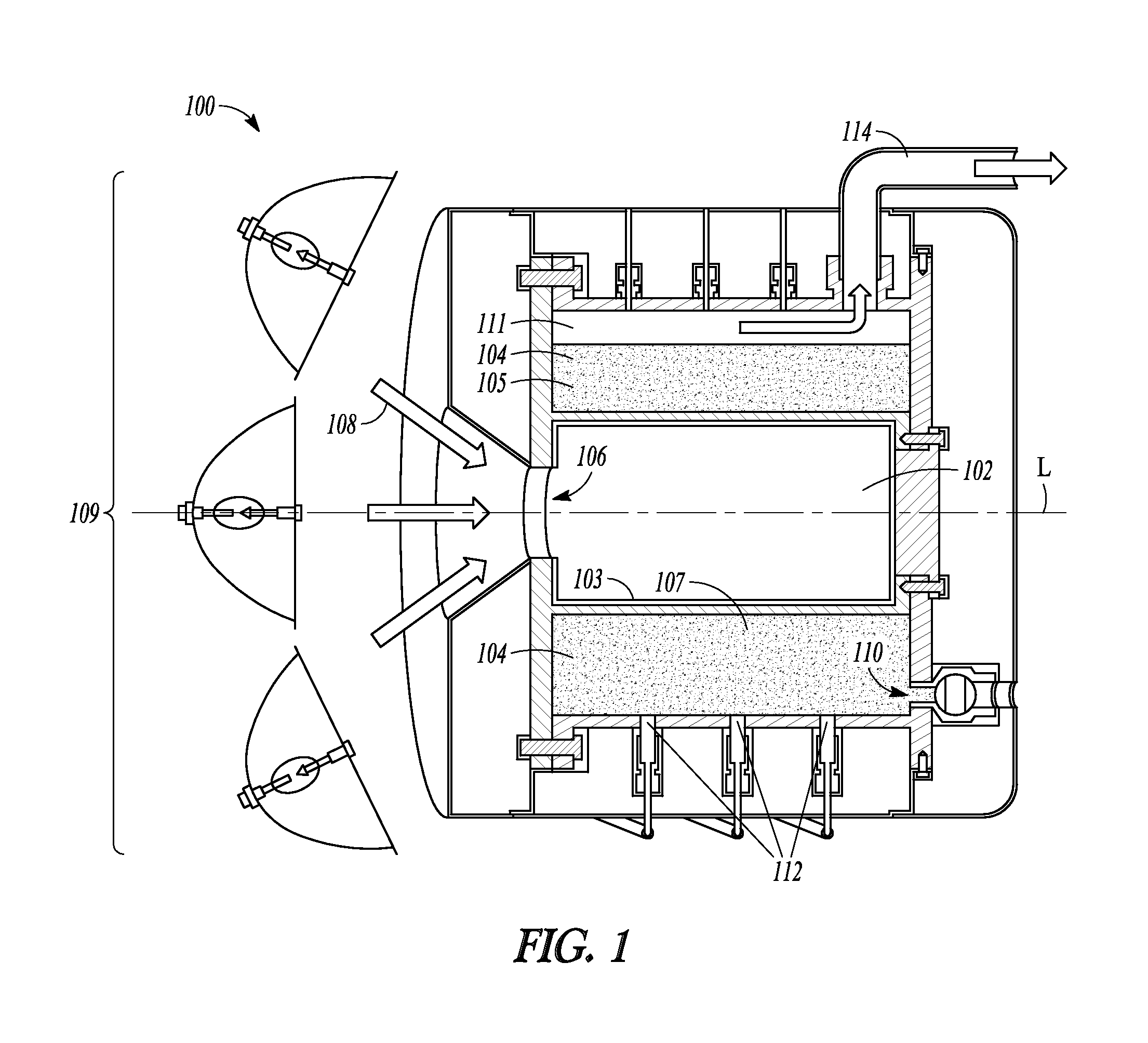Solar gasifier
a solar gasifier and gasifier technology, applied in the field of solar gasifiers, can solve the problems of increasing radiative losses, non-uniform temperature distribution of previous solar gasifiers, and reducing the efficiency of solar gasifiers, so as to improve heat capacity, enhance heat transfer, and improve efficiency
- Summary
- Abstract
- Description
- Claims
- Application Information
AI Technical Summary
Benefits of technology
Problems solved by technology
Method used
Image
Examples
Embodiment Construction
[0020]Reference will now be made in detail to certain embodiments of the disclosed subject matter, examples of which are illustrated in part in the accompanying drawings. While the disclosed subject matter will be described in conjunction with the enumerated claims, it will be understood that the exemplified subject matter is not intended to limit the claims to the disclosed subject matter.
Gasification
[0021]Gasification of biomass can encompass pyrolysis. Gasification can further encompass carbon or char gasification. The product of gasification can include synthesis gas (e.g., syngas), such as a blend of H2 and CO that can be combusted directly, or used as a precursor to generate liquid fuels, synthetic natural gas, or other hydrocarbons. Pyrolysis can include a rapid thermal dissociation reaction in which complex organic molecules, such as the biopolymers cellulose, hemicellulose or lignin, are decomposed at temperatures from about 550 to about 1300 K. With sufficiently fast heati...
PUM
 Login to View More
Login to View More Abstract
Description
Claims
Application Information
 Login to View More
Login to View More - R&D
- Intellectual Property
- Life Sciences
- Materials
- Tech Scout
- Unparalleled Data Quality
- Higher Quality Content
- 60% Fewer Hallucinations
Browse by: Latest US Patents, China's latest patents, Technical Efficacy Thesaurus, Application Domain, Technology Topic, Popular Technical Reports.
© 2025 PatSnap. All rights reserved.Legal|Privacy policy|Modern Slavery Act Transparency Statement|Sitemap|About US| Contact US: help@patsnap.com



